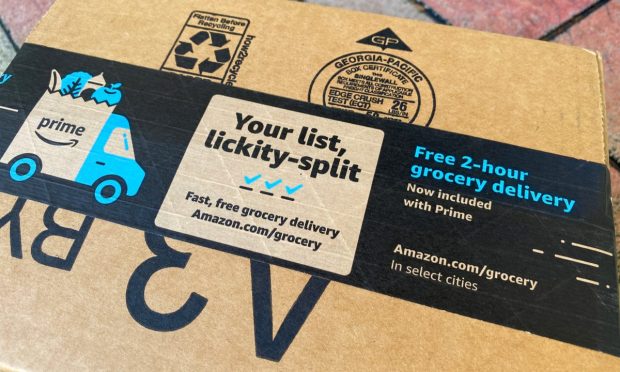Amazon Leverages Subscription Services to Narrow Walmart’s Food Lead

As Amazon looks to minimize Walmart’s 9-to-1 lead in grocery, the eCommerce giant is pushing its direct-to-consumer (D2C) food and drink subscription offerings.
With a dedicated web portal, a range of cost-cutting promotions and targeted messaging around these offerings, the company is aiming to drive adoptions of its private-label and third-party box offerings, giving it a regular point of access to consumers’ homes. Through selling coffee, tea, snack and confectionery options, among others, the company can create an ongoing relationship with consumers, positioning itself in their food- and beverage-purchasing routines.
For more: Amazon Now Ahead of Walmart in Share of Retail Spending New PYMNTS Data Show
While Amazon has been selling private-label subscription boxes for quite some time, its third-party subscription marketplace is a more recent addition. Reports of this shift started circulating mid-2021, as observant site visitors noticed the addition of D2C pet products brand BarkBox.
See also: Third-Party Subscriptions Come To Amazon, The Internet’s ‘Everything Store’
“While I think the subscription model is important, it’s really more important that you’re … focus[ing] on the entire retention and engagement part of the channel,” Blue Apron CEO Linda Findley told PYMNTS in a February interview.
Related news: Blue Apron CEO: Shortening the Supply Chain Can Boost Meal Kit Profitability
One way to drive this kind of retention is by providing sufficient variety to keep consumers engaged. In an interview with PYMNTS, David Asikin, the chief technology officer and co-founder of ICHIGO Inc., the company behind TokyoTreat, a D2C subscription service that sends Japanese snacks to consumers in more than 120 countries, discussed how consistently offering novelty can help businesses retain subscribers in the competitive D2C snack box space.
“In the healthy or guilty snack spaces, brands used to be able to captivate their audience just through their packaging or creative marketing methods,” he explained. “But [now] … consumers often use the diversity of SKUs on offer as the metric to determine if a service can keep their interest for a long time, and ultimately this can influence a service’s LTV and overall user experience.”
You may also like: For D2C Snack Boxes, SKU Count Is the Difference Between Flopping and Thriving
The most popular reason for using retail subscription services is that they provide access to high-quality goods unavailable from other sources, according to data from the 2021 Subscription Commerce Conversion Index, a PYMNTS and sticky.io collaboration based on a survey of more than 2,400 consumers.
Get the report: Subscription Commerce Conversion Index: The Exclusive Access Effect Edition
Additionally, the study also found that the second most popular reason is that it is more convenient than shopping in a store, and the third most popular is that they bring a sense of enjoyment and fun.
Moreover, subscriptions are on the rise. The Index found that, between Q3 2021 and Q4 2021, the average number of subscriptions that consumers grew from 3.7 to 5.0, a 35% increase.
In an interview with PYMNTS’ Karen Webster, Ordergroove founder and CEO Greg Alvo argued that subscription services can succeed if they reframe it as relationship commerce.
“Relationship commerce is really about how do brands — D2C brands, eCommerce sites, retailers, etc. — make themselves indispensable to consumers’ lives by anticipating their needs?” he said.
Read more: Relationship Commerce Moves Customers From ‘One and Done’ to ‘One to One’
